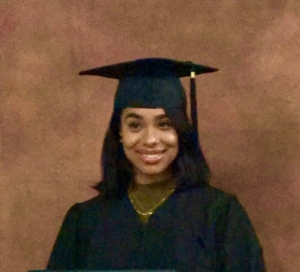Diversity. A lot of business schools talk the talk — but can they, as the saying goes, walk the walk? At Babson College, that is the exact question faculty and staff have been asking themselves over the last few years.
The answer: They’re absolutely going to try.
That’s in keeping with precedent. In our Best Undergraduate Business Programs of 2017 ranking, Babson scored high marks on the diversity front. In the past two years, the school — already well known for having a diverse undergraduate student body — welcomed high percentages of underrepresented minorities in its incoming classes. Some 29% of freshmen were minorities in 2017, up from 28% the year before and a relatively high rate compared to other top B-schools, as many continue to work — and some struggle — to attract and enroll underrepresented minorities and international students.
TOO MUCH FOCUS ON THE NUMBERS, NOT ENOUGH FOCUS ON THE EXPERIENCE
But numbers are just a part of the story. In fact, say administrators and students alike, there’s too much emphasis placed on them.
“Yes, the numbers are important,” says Alana Anderson, senior assistant director of Multicultural Programs at Babson. “We need to increase the mass of people who look different or bring different experiences. We increase the numbers, but we don’t think about the atmosphere and climate we ask students to come into. We don’t do enough to examine the climate and experience that people face and sort of just bear through once they’re here.”
“Diversity is a buzzword that equals dollar signs,” says Nadia Mendes, who graduated from Babson last December. “The thinking is just to recruit and enroll and, by throwing them in, they’ll just intermix and hug it out with rainbows and unicorns. But it doesn’t work that way. We have all these things we bring with us that change how we interact with one another.”
Tough words from a student, but administrators say Mendes is representative of a growing trend where students of all backgrounds and creeds are raising their hands, pushing back, and holding schools accountable.
A CHANGE IN TIDE THAT’S BEING LED BY STUDENTS
Anderson says when it comes to diversity, “institutions are slowly becoming more honest with themselves about themselves, but I think it’s because the student body is not letting them get by. The tide is changing because students aren’t allowing institutions to turn a blind eye or just say, ‘We don’t know how to do it.’ Students are really pushing back and saying, ‘This isn’t OK anymore.’”
You can count Mendes to be one of those tide changers. Last year, she co-authored a petition for the college’s faculty, staff, and administration to address shortcomings she and other minority students said they saw at the school. What’s notable is that the underscored shortcomings extend well beyond a failure to increase the population of students of color. The petition also called foul on the school’s faculty diversity, lack of training of said faculty on how to properly engage different groups of students in meaningful ways, and a curriculum that inherently lacks diverse points of view.
“We are proud,” the petition reads, “of Babson’s increasing commitment to racial justice and equality; however, we believe that Babson can do better in two key ways. Specifically, students of all backgrounds have expressed great discomfort with: 1) the lack of a racially diverse education within Babson’s curriculum; and, 2) the lack of domestic racial diversity among students, staff, and faculty.” (Read the entire petition here.)
The appeal further called for an audit of Babson’s current undergraduate and graduate curricula and faculty. Why? “First, to determine the diversity of existing cases put before students to study and teaching notes and lectures that incorporate issues of domestic diversity and inclusion and racism. Secondly, a funded commitment to recruit, retain, and promote more domestic diverse faculty, specifically those of Black/African-American and Hispanic-American backgrounds.”













Questions about this article? Email us or leave a comment below.